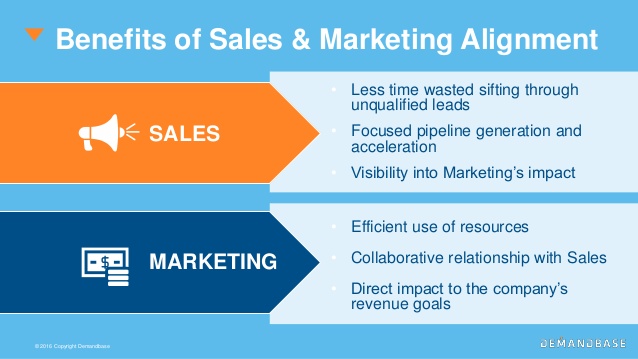One of the most important steps that any company can take is aligning their marketing and sales teams around a common goal. Creating that alignment and ensuring that marketing and sales teams are working toward the same goals will make you more effective, limit disagreements, and help to create a well-oiled machine that keeps your sales pipelines full.
However, achieving that alignment can be very difficult. Only one in two companies have a shared definition of a qualified lead between marketing and sales teams. Many organizations have tried all sorts of tips and tricks to further their sales and marketing alignment, only to find that their efforts didn’t do much to put both teams on the same page. Well, imagine undertaking that process with a fully remote team. How do you facilitate alignment between a team that doesn’t work in the same office, let alone two different teams where everyone works from their own locations.
Luckily, there are a few basic steps that any remote company can take to align their sales and marketing. While it is still a difficult task, taking alignment one step at a

Source: DemandBase
Inject Sales into the Content Marketing Process
Did you know that 65% of sales reps say that they can’t find the content that they need when engaging with prospects? Some companies might find that this means that they aren’t creating enough content, but others would say that it means that the sales department needs to be more involved in the content creation process.
Particularly in account-based marketing, it is incredibly important that you have content to provide to your prospects to help nurture them through the sales process. Often, the types of content that marketing and sales teams would like can differ because they each have different goals. Involving your sales team in the topic planning process can ensure that your sales teams have more collateral to use throughout the sales process.
Provide Opportunities for Sharing and Collaboration
One of the biggest mistakes that remote companies can make is allowing their employees to work by themselves on an island. That is a huge mistake. While it is hard enough to get teams to communicate and interact within their own team, trying to facilitate collaboration between disconnected teams can be an even bigger problem.
The more opportunities that you give your teams to interact with each other, the better of a chance you have for creating sales and marketin alignment. Even a simple slack chat can be a great way to improve interactions and help your teams to work together toward a common goal.
Schedule a weekly meeting and give both teams the opportunity to provide feedback on how the collaboration is going. Or, try scheduling time for your two teams to work together. The more time and effort that you put into creating these opportunities, the more your teams will actually take advantage of them. Familiarity takes time, but ultimately letting your remote teams get to know each other personally will really help you to drive long-term growth.
In remote teams, managers have to put a lot of effort into facilitating collaboration. Without that effort, the teams are likely to stay isolated and never truly work together on important projects. Schedule shared meetings and use those as an opportunity for each team to provide the other with polite feedback.
Provide Sales Enablement Tools
If you want your marketing and sales teams to succeed, you have to provide them with sales enablement tools. Sales enablement is the process of providing collateral, tools, and support that gives your sales teams everything that they need to succeed.
Sales enablement tools are at the center of every aligned company. There is no other way for the collaboration to work. Even very aligned companies still must deal with the fact that marketing and sales teams do have some self-interest and differing goals that can create friction between the two teams.
Content, for instance, is a valuable sales enablement tool. By arming your sales teams with relevant content that they can use to help nurture prospects through the sales process, you are giving them tools that help them to do their job. The same can be said for tools. A CRM tool is an essential sales enablement tool. Any investment that you make that will help your sales team to close sales is an investment in your business as a whole.
Use Shared Goals
For your marketing and sales teams to work toward a common goal, you actually have to define those goals. “Growing the company” is not a goal. What are the specific metrics and KPIs where their interests align? Use those to your advantage. Find areas where they naturally have some overlap in terms of what they want to achieve. Don’t force it.
Let your teams brainstorm together to find shared goals that will work for both teams without changing their focuses or processes too drastically. The more common ground that you can find among remote sales and marketing teams, the better chance you have of achieving meaningful alignment. We recommend that companies use the SMART Goals System to plan effective goals.
Celebrate Successes
When things go right, let people kick back and enjoy it. When you reach a goal, give your teams a reward of some kind. Maybe you could order a pizza to everyone’s house? Or open up a group call and let everyone joke around for an hour or two instead of working. Or maybe just give them a paid day off. You want to make sure that your teams know how important sales and marketing alignment among your remote teams is to your company, and use that to create a positive atmosphere when things go right.
Alignment Takes Time & Effort
The main point that we want to drive home here is that creating alignment between your sales and marketing teams in a remote organization takes some serious time and effort. It won’t happen overnight. Focus on creating small improvements in your alignment strategies and over time you’ll begin to see those improvements start to result in measurable sales. Alignment is an ongoing strategy that will never be perfect and always has room for improvement.

